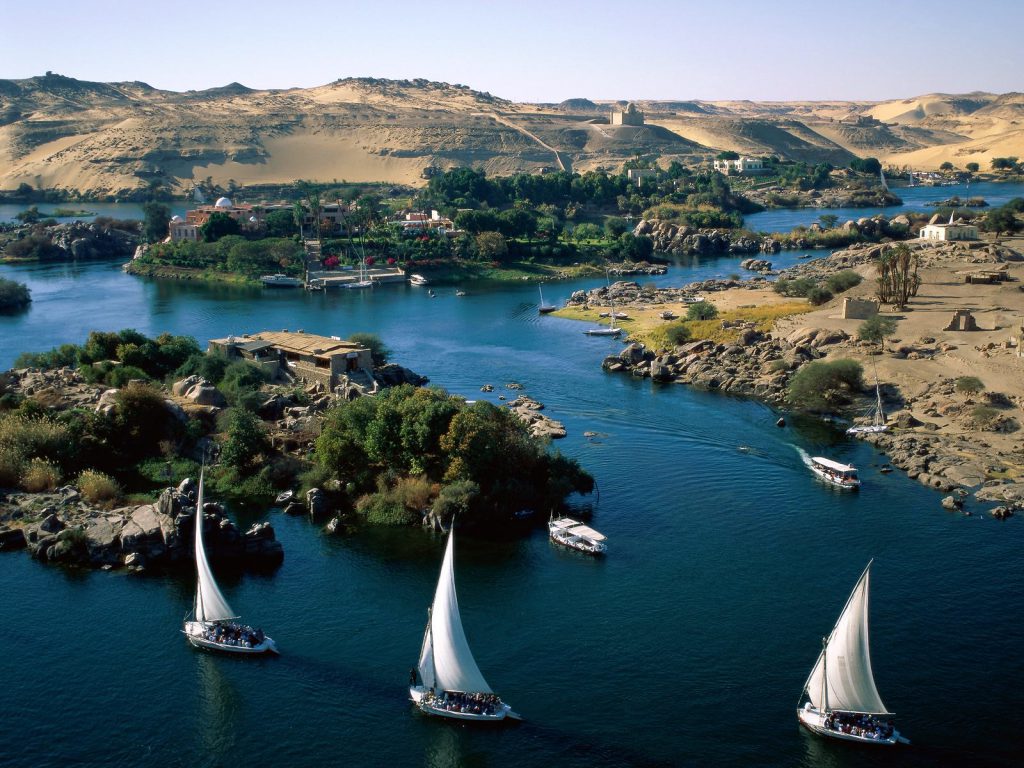
Contributors
Author: Jarno van der Wal, MA in Middle Eastern Studies, University of Amsterdam, The Netherlands.
Peer review: Fanack Water Editorial Team.
Ongoing disagreements over technical and legal issues concerning the construction of the Grand Ethiopian Renaissance Dam (GERD) on the Blue Nile led to new talks being initiated between Egypt, Sudan and Ethiopia, after Ethiopia started to fill the dam’s reservoir in July 2020.
Egypt insists that filling the reservoir requires a legally binding agreement over the equitable allocation of the Nile’s waters to be in place. Ethiopia, meanwhile, argues that the GERD will not significantly affect the flow of water into the Nile and that the hydroelectric project will improve livelihoods in the region as a whole. Unsurprisingly, the talks stalled.
Ethiopia, an upstream riparian, announced its multi-billion-dollar dam project in 2011 amid the political turmoil of the Arab Spring in Egypt. Almost a decade later, negotiations have still not resulted in an agreement that would settle the outstanding issues surrounding the dam.
Built at a cost of $4.8 billion, funded mainly by domestic resources with financing from Chinese banks to acquire turbines and electrical equipment for the hydroelectric plants, the project is designed to generate 6,450 megawatts of power. Once operational, the GERD will generate sufficient hydropower to service the needs of Ethiopia’s entire population and make the country the energy hub of Africa.
Egypt, as a downstream riparian, sees the dam as a major threat to its water and food security. Some 95 per cent of all Egyptians live along the Nile, and the river is considered a lifeline for its citizens. Due to the expected population increase, climate change and the effects on the agricultural sector, concerns in Egypt are mounting. According to the UN, the population will increase by one million every six months. Meanwhile, the water demand is growing amid rapid urbanisation and industrialisation, which eventually could lead to water shortages in 2025.

Furthermore, the changing climate affects water resources and agriculture, and contributes to a declining water supply. Because of the decreasing precipitation, rising temperature and the subsequent higher evaporation, less water will remain from the Nile. In addition, the rising sea level of the Mediterranean Sea is a danger for the fertile soil in Egypt. The saline seawater from the Mediterranean that flows inwards, leads to salinisation and as a consequence crops are dying.
The main bone of contention in the current dispute is the speed at which the GERD’s reservoir will be filled. Ethiopia aims to fill it as fast as possible to maximize the generation of hydropower. Egypt wants it to be filled over a longer time frame and is seeking reassurances that Ethiopia will release enough water from the reservoir to mitigate a drought downstream.
Water scarcity – both real and potential – is a breeding ground for conflict, especially when it comes to transboundary water resources. Water politics have for decades prevented a comprehensive agreement from being reached over how much water Egypt, Ethiopia and Sudan may each extract from the Nile.
Egypt, which is often portrayed as the hydro-hegemon in the region, has solidified its hegemonic position in the Nile Basin by frequently citing the colonial-era agreements of 1902, 1929 and 1959. The 1959 bilateral agreement between Egypt and Sudan, in particular, favours Egypt by allocating 88 per cent of Nile waters to Egypt and the remaining 12 per cent to Sudan. Ethiopia – the source of the majority of water that flows into the Nile – was allocated nothing.
Ethiopia has enormous potential to develop its hydropower but was incapable of challenging Egypt’s hegemonic position until the mid-1990s because of domestic political instability and a lack of financial resources and knowledge. Instead, it took the route of international diplomacy, putting the issue on the agenda at international and regional conferences. It also tried to reach an agreement with the other Nile Basin states, but Egypt and Sudan blocked those initiatives several times. This blocking strategy and overall uncooperative stance led to resentment in Ethiopia and, as a consequence, Ethiopia decided to implement water projects unilaterally.
Sudan, for its part, is caught in the middle. Although it initially sided with Egypt, it shifted its allegiance towards Ethiopia after former Sudanese President Omar al-Bashir and his government understood the mutual benefits of the project. Once the GERD’s reservoir is filled, the flow of water will be regulated, reducing the extreme floods that have plagued Sudan for decades. Yet despite recognizing the benefits, Sudan is concerned about safety issues associated with the GERD. Its main concern is the potential harm that Sudan could suffer if the GERD, located 40 miles from the border with Sudan, were to fail or collapse. Therefore, Sudan wants a comprehensive agreement between the three riparian states
Historical mistrust is affecting the negotiations, which are characterised by war rhetoric and accusations back and forth. Egypt has asked for the United Nations to intervene, while Ethiopia prefers regional mediation through the African Union. Both parties have openly threatened military action that could ultimately lead to an armed conflict.
It is inevitable that Ethiopia will continue to fill the reservoir, with or without Egypt’s support, and a peaceful resolution is necessary to avert military action. This must be done without Egypt and Ethiopia losing face among their supporters. If no agreement is reached, the security of the region will be put at risk.

